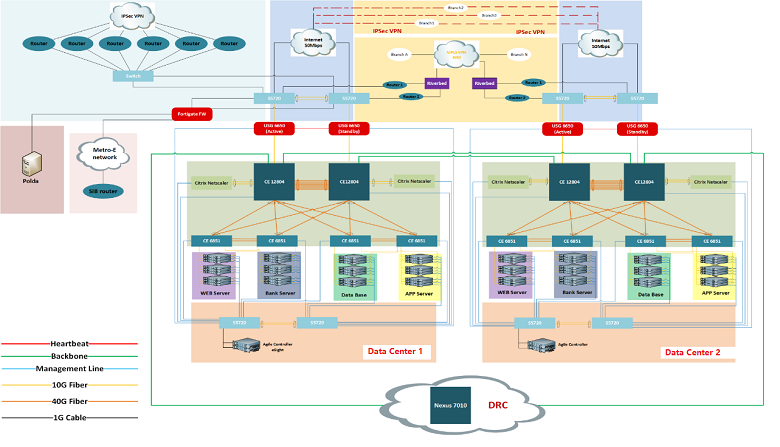Huawei Helps Semen Indonesia Construct an SDN-Based Data Center Network
This site uses cookies. By continuing to browse the site you are agreeing to our use of cookies. Read our privacy policy>
![]()
Enterprise products, solutions & services
PT Semen Indonesia (Persero) Tbk, or Semen Indonesia — formerly known as PT Semen Gresik (Persero) Tbk — is a well-known cement company in Indonesia’s building materials industry. The company began operations in 1957 and has since grown into one of the largest cement producers in Southeast Asia.
Semen Indonesia is headquartered in Gresik, East Java and plans to open a new office in Jakarta. Its annual sales revenue generates approximately US$2.3 billion (IDR 33.4 trillion). Semen Indonesia’s vision is to become the world’s largest cement company.
In the face of such fast business growth, Semen Indonesia expects to improve automation and digitalization with an optimal ICT infrastructure. As such, the existing ICT infrastructure needed to be renovated. ICT infrastructure transformation must avoid service interruptions to prevent financial losses, as it is estimated that if services are interrupted for half an hour, financial losses will reach US$100,000 (IDR 1.45 billion). Devices from multiple vendors coexist on the live network, and the growing diversity of services complicates network Operations and Maintenance (O&M) and interoperability. The upgraded ICT infrastructure must reduce network complexity. In addition, this new ICT infrastructure must be future-proof and meet service development needs over the next three to five years.
Previously, Semen Indonesia’s services used a single data center to operate. If a data center outage lasted more than two hours, business transactions would be hindered, manufacturing and distribution would be delayed, and IT infrastructure and systems would be damaged.
To improve ICT services for business continuity, Semen Indonesia initiated an active-active data center project. The new data center infrastructure must use the latest technologies and ensure data security, reliability, and continuity.
Semen Indonesia’s active-active data center must feature:
After assessment of Semen Indonesia’s situation and requirements, Huawei proposed a CloudFabric Active-Active Data Center Solution that uses SDN technology to avoid single-site data center failures and ensure continuity and availability of key services.
Huawei’s expert team assisted Semen Indonesia to sort their services and redefine their network using Huawei’s CE-series switches that feature a spine-leaf architecture and SDN technology, Next-Generation Firewalls (NGFWs), RH-series servers, as well as storage. All operate on a single cloud platform.
Huawei’s holistic solution interoperates with legacy products and solutions, minimizes project costs, and reduces the Total Cost of Ownership (TCO).
Huawei also provided a complete data center migration solution to ensure smooth service migration and avoid losses caused by service interruptions.

Huawei’s SDN-capable solution deploys Virtual Extensible Local Area Network (VXLAN) to set up active-active data centers and ensure smooth VM migration between data centers.
The new data center network has the following functional areas: Border Zone, Core Zone, Product Zone, and Management Zone.

Overall Network Topology
Huawei’s CloudFabric Solution helped Semen Indonesia build an SDN-based data center network. Through automated network configuration and added L4-to-L7 value-added services (such as firewalls and load-balancers) for on-demand application networks, this new network implemented Network-as-a-Service (NaaS) for substantial improvement of service deployment efficiency while network O&M is simplified.
A highly reliable Disaster Recovery (DR) and backup solution from Huawei greatly improves the availability and security of Semen Indonesia’s core network systems. In addition, the migration from the old to new systems with efficient interoperability is interruption-free. Huawei’s solution ensures smooth evolution and will support the service needs of Semen Indonesia over the next five years.
The Huawei solution benefits Semen Indonesia in a number of tangible ways. For example: